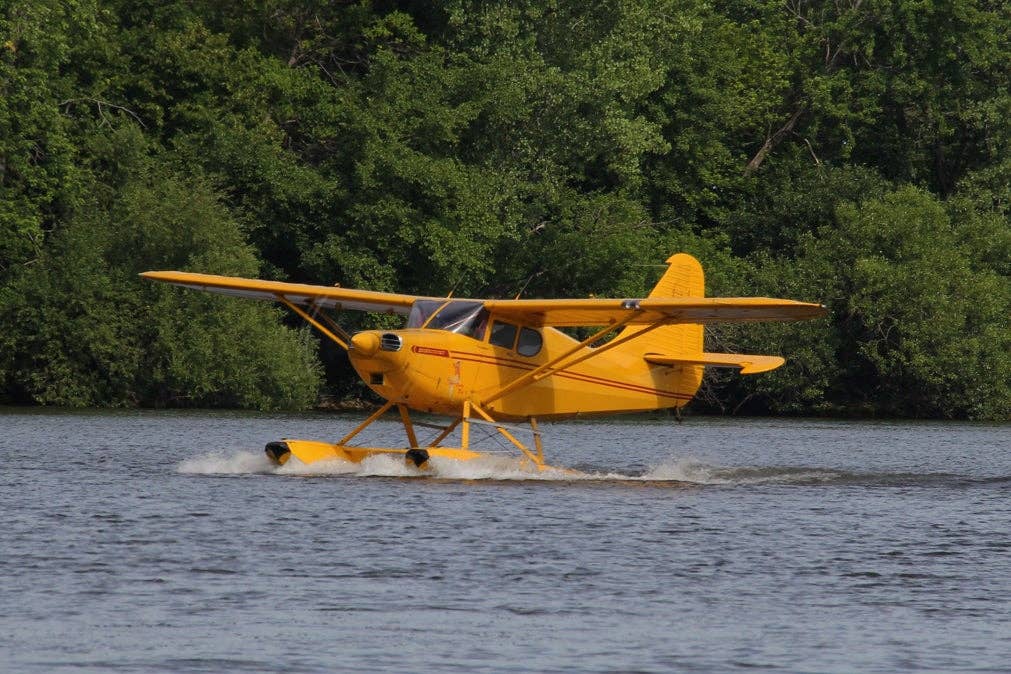Best Pilot Ratings to Advance Your Career
Here’s how to stand out in the pool of applicants in the aviation industry.

Seaplanes are a great middle ground for pilots interested in expanding their horizons. [FLYING File photo]
Many in the aviation community are building time and experience to advance toward a career in aviation.
While some use professional connections to secure jobs flying twin, turbine, or charter operations to gain critical experience, others build time quickly as flight instructors or even buying and renting airplanes.
In such a big pool of applicants, many want to know what to do to stand out as a uniquely qualified and capable pilot. One of the best ways to do so is to attain special ratings and endorsements that are not common in the general public.
Glider Pilot Add-Ons
Becoming a glider pilot is one of the best ways to build quality flight time.
Gliding with no engine forces a pilot to learn more about the physics of flight, particularly controlling lift and drag directly to stay airborne for hours. Even just a little glider experience can do wonders to help pilots learn new skills or refine the ones they already possess.
Glider pilots can also attain additional ratings, endorsements, and privileges to further their career progression. They can, for example, receive an endorsement to do aerotows, flying airplanes that pull unpowered gliders into the air. This is a great way to sharpen skills and even make a few bucks in the process.
Glider pilots also need endorsements to add on each new type of glider launching. Those who have only ever been towed, for example, need an additional endorsement to fly self-launching gliders.
Learning the ins and outs of a wider variety of aircraft opens pilots up to a wider variety of situations that broaden their skills and experience, making them more competitive for a wider variety of positions down the road.
High-Altitude Endorsement
The process for attaining a high-altitude endorsement can be tricky, as you need to find someone willing to provide you with a capable aircraft for the training.
However, receiving the high-altitude training is valuable for pilots interested in continuing their careers in jets, turbine aircraft, and other high-performance aircraft down the road.
A high-altitude endorsement is required when flying a pressurized aircraft with a service ceiling or maximum operating altitude, whichever is lower, above 25,000 feet. The endorsement includes training on the dangers of hypoxia and other high-altitude physiological challengers, as well as aerodynamics and operations of systems.
- READ MORE: Top Aviation Headsets
The flight portion of the training includes both standard operations and emergency procedures. Simply having flight training in high-performance, high-altitude aircraft—let alone experience acting as a pilot of one—is invaluable for whatever aviator job may be interested in applying for down the road.
Seaplane Rating
Seaplanes are a great middle ground for pilots interested in expanding their horizons.
While the flight characteristics of a seaplane will be familiar to someone who already has time in land-based airplanes, learning to touch down on water is a unique challenge that can help pilots prove they’ve still got what it takes to face new challenges and succeed in new situations.
Though rare, some flight schools even offer multiengine seaplane add-ons. Pilots looking to build additional multiengine time can use this rating to build experience in a way that stands out from other pilots who often simply rent multiengine land airplanes to finish their time-building requirements.
Ground Instructor Certificate
If you’re looking for a rating to boost your aeronautical knowledge—at a fraction of the cost—then a ground instructor certificate is a great option.
All you need to do is pass the appropriate ground instructor written test—plus the Fundamentals of Instructing (FOI) test if you’re not already a flight instructor—and bring your result to the FAA.
FAA Advanced Ground Instructors (AGIs) are permitted to give ground training to almost any pilot or applicant except for instrument rating applicants. That requires an Instrument Ground Instructor (IGI) rating.
- READ MORE: How to Become an Aerobatic or Airshow Pilot
Giving ground lessons with real students will help pilots refine their knowledge while getting paid. Many flight instructor applicants obtain their ground instructor certification to help them study for their flight instructor exams by working with real students to put lesson plans to the test.
There are a variety of ways to expand your skills and knowledge as a pilot. Through new ratings, additional experience, and unique flight time, pilots can stand out while refining their abilities.
There is no one best way to face the challenge of becoming a professional pilot but rather a variety of methods based on individual needs and future goals.

Sign-up for newsletters & special offers!
Get the latest FLYING stories & special offers delivered directly to your inbox






